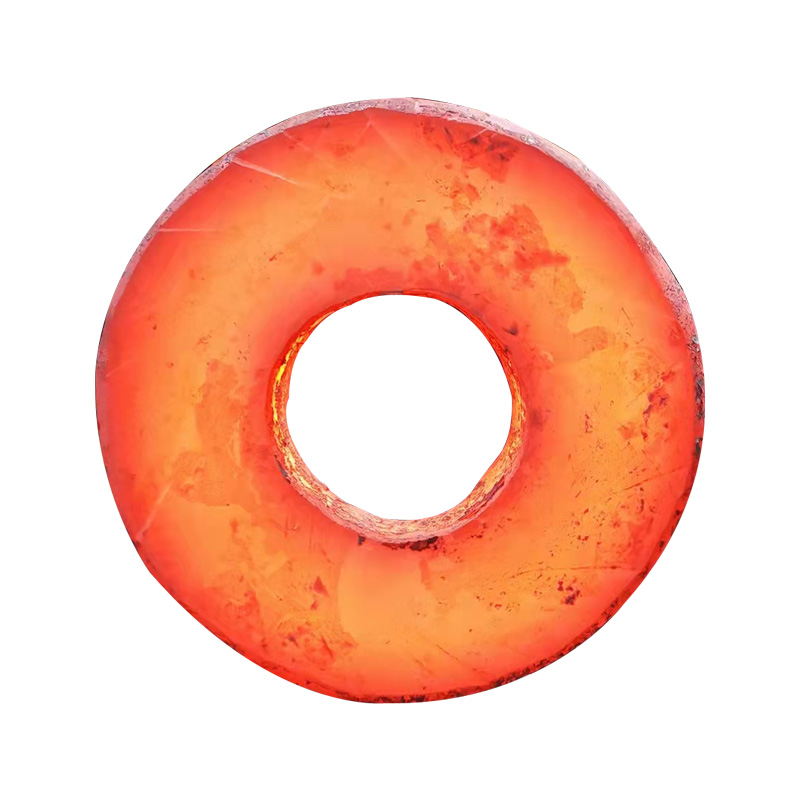The use of forgings
2022-08-30
Forging means a workpiece or blank obtained by forging and deforming a metal blank. Forging can change the mechanical properties of metal billets by applying pressure to them to produce plastic deformation. The looseness of the metal can be eliminated by forging. Holes, so that the mechanical properties of forgings can be improved. Forgings have the following uses:
① General industrial forgings refer to machine tool manufacturing, agricultural machinery, agricultural tool manufacturing and bearing industry and other civil industries.
② Forgings for hydraulic generator, such as spindle and intermediate shaft, etc.
③ Forgings for thermal power stations, such as rotors, impellers, guard ring spindles, etc.
(4) Metallurgical machinery, such as cold rolls, hot rolls and herringbone gear shafts, etc.
⑤ Forgings for pressure vessels, such as cylinder, tank ring flange and sealing head.
⑥ Marine forgings, such as crankshaft, stern shaft, rudder shaft, thrust shaft and intermediate shaft, etc.
⑦ Forging and pressing machinery and equipment, such as hammer head, hammer rod, hydraulic press column, cylinder block, wheel shaft press machine pillar and cylinder block, etc.
⑧ Module forgings, mainly hot die forging hammer forging die.
⑨ Forgings for the automobile industry, such as left and right steering knuckles, front beams, couplings, etc. According to statistics, forgings account for 80% of the mass of automobiles.
⑩ According to statistics, forgings for locomotives, such as axles, wheels, leaf springs and crankshafts, account for 60% of their mass.
Statistics show that forgings for military purposes, such as gun barrels, door bodies, bolt supports and traction rings, account for 65 percent of the total mass of tanks.
Whether there are cracks, inclusions, loose and other defects in the forging, the macroscopic organization on the forging section can be checked by naked eye or by 10 ~ 30 times magnifying glass. The commonly used method in the production is acid etching test, that is, in the forgings need to be inspected parts of the sample cut, with acid etching can clearly show the defects of the macroscopic organization on the section, such as forging streamline distribution, cracks and inclusions.
① General industrial forgings refer to machine tool manufacturing, agricultural machinery, agricultural tool manufacturing and bearing industry and other civil industries.
② Forgings for hydraulic generator, such as spindle and intermediate shaft, etc.
③ Forgings for thermal power stations, such as rotors, impellers, guard ring spindles, etc.
(4) Metallurgical machinery, such as cold rolls, hot rolls and herringbone gear shafts, etc.
⑤ Forgings for pressure vessels, such as cylinder, tank ring flange and sealing head.
⑥ Marine forgings, such as crankshaft, stern shaft, rudder shaft, thrust shaft and intermediate shaft, etc.
⑦ Forging and pressing machinery and equipment, such as hammer head, hammer rod, hydraulic press column, cylinder block, wheel shaft press machine pillar and cylinder block, etc.
⑧ Module forgings, mainly hot die forging hammer forging die.
⑨ Forgings for the automobile industry, such as left and right steering knuckles, front beams, couplings, etc. According to statistics, forgings account for 80% of the mass of automobiles.
⑩ According to statistics, forgings for locomotives, such as axles, wheels, leaf springs and crankshafts, account for 60% of their mass.
Statistics show that forgings for military purposes, such as gun barrels, door bodies, bolt supports and traction rings, account for 65 percent of the total mass of tanks.
Whether there are cracks, inclusions, loose and other defects in the forging, the macroscopic organization on the forging section can be checked by naked eye or by 10 ~ 30 times magnifying glass. The commonly used method in the production is acid etching test, that is, in the forgings need to be inspected parts of the sample cut, with acid etching can clearly show the defects of the macroscopic organization on the section, such as forging streamline distribution, cracks and inclusions.

X
We use cookies to offer you a better browsing experience, analyze site traffic and personalize content. By using this site, you agree to our use of cookies.
Privacy Policy



